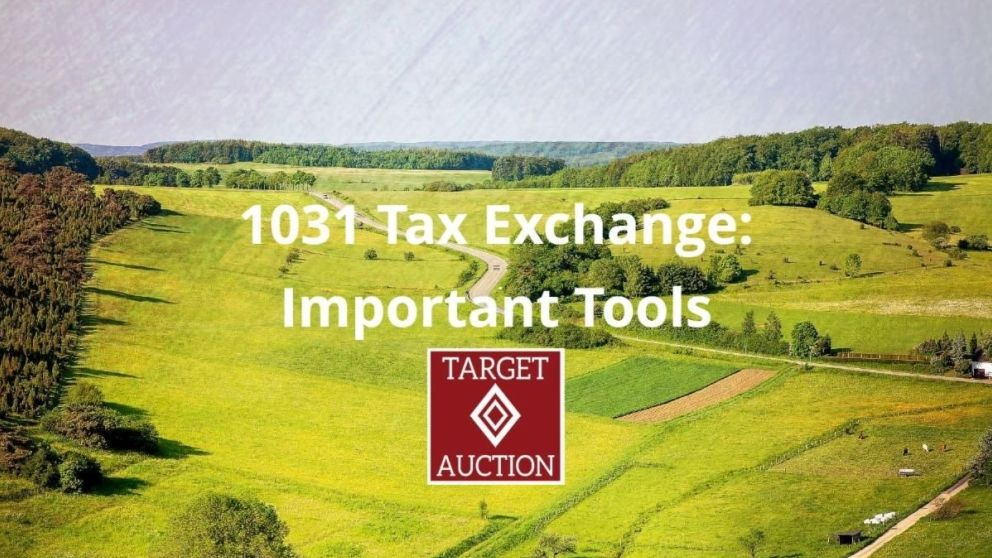1031 Tax Exchange: An Important Tool For Landowners

By Kelly Johnston, Broker Associate, Keller Williams Land
Also known as a “like-kind” exchange, the 1031 Tax Exchange allows qualifying landowners to defer capital gains taxes on investment property so long as they’re purchasing another property of equal or greater value within a set timeframe. Learn about the tax and wealth transfer benefits of a 1031 Exchange below, as well as possible downsides to this popular real estate tax strategy.
What is a 1031 Tax Exchange?
A 1031 Tax Exchange is a tax exemption offered to real estate owners who intend to sell an investment property and replace it with another one. Under the rule, investors can defer the payment of capital gains taxes on the sale of the original property so long as their new purchase is considered a like-kind exchange.
The IRS defines a like-kind property as one “of the same nature, character, or class,” of another owned property, regardless of quality, location, type, or grade. Notably, a like-kind exchange does not need to be an exact match in property value. Any cash earned above the like-kind threshold is taxed normally, with the option to still defer taxes on qualifying gains.
Why Do a 1031 Exchange?
There are two main advantages of a 1031 Tax Exchange for land investors.
Expanded Investment Potential
With a 1031 Tax Exchange, sellers get more cash in their pocket to invest in their next land purchase. And because of the broad scope covered in the IRS’s definition of like-kind property, landowners are not limited by location or property type when transferring these gains.
Wealth Transfers
The 1031 Exchange Rule allows for the complete elimination of deferred capital gains if the original investor dies and the property is passed to one or more beneficiaries. This is known as a “step-up in basis.”
Likewise, a 1031 Exchange allows landowners to defer capital tax gains in perpetuity so long as they maintain ownership of the new property. Those who want to sell can simply use a 1031 Tax Exchange again by purchasing another like-kind property.
How a 1031 Tax Exchange Works
Step One: Sell the Original Property - Land should be listed and sold using standard practices, with the only caveat (aside from needing to meet 1031 Exchange rules for qualifying properties) being that proceeds from the sale must be held in escrow by a qualified intermediary (QI). Sellers may only use these proceeds to purchase their like-kind exchange property. Any gains above the escrowed amount will be taxed as normal.
Step Two: Select a Replacement Property - Land sellers have 45 days to find a replacement property and 180 days from that to complete the purchase. If this timeline is not met, the landowner will be disqualified from making a 1031 Exchange.
Aside from having to meet the designated timeline, real estate investors must also pay a 1031 Exchange fee to their QI – usually around $1,200 for a standard one-sell, one-buy exchange.
1031 Exchanges for Wealth Building and Transfers
We’ve already discussed how a “step-up in basis” can eliminate capital gains taxes for any beneficiaries who inherit a property held under a 1031 Exchange. But as it turns out, that isn’t the only way a 1031 Tax Exchange supports wealth building and transfers.
Other wealth benefits of 1031 exchanges include:
- Increased buying power for investors using land purchases as part of their wealth-building strategy.
- Ability to diversify land portfolio based on market conditions.
- Simple and flexible estate planning capabilities.
If one of your goals as a land investor is to build generational wealth, a 1031 Tax Exchange can be a great way to do it, especially when used alongside certain specialized trusts such as Delaware Statutory Trusts (DSTs).
What Kind of Land Qualifies for a Like-Kind Property Exchange?
While there are limited instances where a 1031 Tax Exchange may apply to a principal property, this capital gains deferment technique is typically only applicable to investment properties.
This includes (with certain qualifying factors):
- Raw/vacant land
- Rental Properties
- Commercial and development properties
- Industrial land
- Agricultural land
- Recreational land
- Timberland
The distinguishing factors that apply to 1031 qualifying properties include that they must be real property, held for investment or business use, and like-kind eligible.
Are There Downsides to a 1031 Tax Exchange?
There are a lot of advantages to a 1031 Exchange. There are also some important disadvantages you’ll want to know about before going all-in.
Less liquidity: Sellers cannot touch any QI-held proceeds from the sale of the first property. That means you can only use them for a qualifying real estate exchange, and not for personal need or another type of investment.
Strict timing guidelines: There is no flexibility on the 1031 Exchange rules that require you to find an exchange property within 45 days and close on it within 180. If you miss one of these deadlines, your 1031 Exchange will be void and you will owe taxes on all relevant capital gains.
Pressure to close: Because sellers must complete the purchase of an exchange property within 180 days, there is very little room for price negotiations or waiting for that perfect property to arrive on the market. You’ll have to act fast, and may end up overspending just to ensure your tax deferment goes through.
Key Takeaways
A 1031 Exchange can be an excellent opportunity to increase your land investment potential and/or establish more wealth for you and your family. If you’re interested, we encourage you to talk to a financial planner to get more information and make sure you meet all the necessary qualifications.
If you are interested in selling real estate, please allow Target Auction Company the opportunity to detail the benefits of our auction platform and provide you with a free consultation. We can offer the information and advice needed to make a sound decision regarding the sale of your property. We can be reached by email, at 1-800-476-3939 or visit www.TargetAuction.com.














